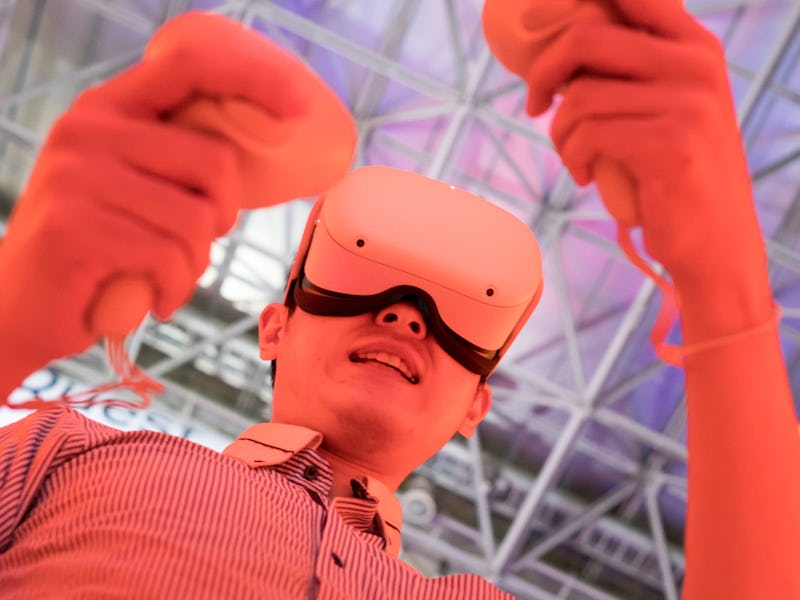Meta’s Quest 3 Is Shaping Up To Be a Major Leap for VR
We could have another VR hit on our hands.

It won’t be launched until this fall, but a new hands-on from Bloomberg’s Mark Gurman has basically confirmed most, if not all, of the promising rumors we’ve already covered about Meta’s upcoming Quest 3 headset.
The Quest 2 was massively popular, but despite regular software releases, it hasn’t managed to stay relevant. The Quest 3 sounds like it improves on it in every way, offering a new design, a more powerful Qualcomm chip, and a focus on mixed-reality experiences that could make a better case for Meta’s vision than the Quest Pro.
The Quest 3, In Brief
Leaked renders suggested the Quest 3 would change up the camera placement and look of the front of the Quest 2, and that’s been born out in the hands-on. Besides the expected tracking cameras along the sides, the Quest 3 has “three vertical pill-shaped sensor areas across the front” with one color passthrough camera each on the left and right “pills.” Additionally, there’s a depth sensor — a first for the Quest — in the center “pill.” That’s one more color passthrough camera than the Quest Pro, and the depth sensor suggests the Quest 3 could be even more capable at augmented reality-adjacent apps than the more expensive headset is.
According to Gurman, the Quest 3 feels “far lighter and thinner” than the Quest 2, likely due to Meta applying the thinner pancake lens design it used on the Quest Pro. But even with less space to play with, it shouldn’t be less powerful. Meta is using a second generation of Qualcomm’s Snapdragon XR2 chip on the new headset, which means more advanced games and experiences are likely on the way. Maybe even at Meta’s Gaming Showcase on June 1.
Interestingly, the Quest 3 is also shipping with new controllers — specifically, controllers without the Quest 2’s signature tracking rings. On the Quest Pro, Meta got around the tracking rings by making each Touch Pro controller able to track its own position with built-in cameras, but the Quest 3’s controllers apparently don’t do that, which points towards Meta being interested in emphasizing hand tracking.
Improved Passthrough
Mixed reality, in Meta’s current implementation, involves overlaying in-app graphics over a live video feed of the world around you. It’s the current way most manufacturers are trying to simulate the experience of wearing AR glasses before the displays that will actually make that possible are ready. The Quest 3 sounds like it’s uniquely suited for the task, with cameras that offer a clearer color view and the ability to automatically map the walls around you through “environment meshing.” The Quest 3’s passthrough video is so clear you can even use your phone while wearing it!
Considering Apple is rumored to be similarly interested in mixed reality, it’s very possible, even at a higher price than the $400 Quest 2, Meta’s Quest 3 becomes the low-cost headset to buy after Apple launches its own device. The iPhone maker staking its claim should have positive ripple effects for Meta either way, though, and the Quest 3 sounds like Meta is well-positioned to take advantage of them.